Who We Are
Geospatial data and analysis is critical for conservation, from planning to implementation and measuring success. Every day, mapping and spatial analysis are aiding conservation decisions, protected areas designation, habitat management on reserves and monitoring of wildlife populations, to name but a few examples. The Geospatial group focuses on all aspects of this field, from field surveys to remote sensing and data development/analysis to GIS systems.
How to Get Started
Want to learn more about how remote sensing is used in conservation? Check out the first two episodes of this season of Tech Tutors, where our Tutors answer the questions How do I use open source remote sensing data to monitor fishing? and How do I access and visualise open source remote sensing data in Google Earth Engine? You can also check out our Virtual Meetup Archive for a range of panels that overlap with Geospatial topics, or take a look at our Earth Observation 101 lecture series from Dr. Cristian Rossi.
Our Purpose
The WILDLABS Geospatial Group is for conservation practitioners, geospatial analysts, and academics that want to:
- Share geospatial resources, best practices, data, and ideas;
- Network amongst geospatial and data practitioners;
- Create peer learning opportunities;
- Promote the use of free and open-source geospatial software; and
- Improve the use of GIS software and geospatial analyses in conservation management and research.
Group curators
3point.xyz
Over 35 years of experience in biodiversity conservation worldwide, largely focused on forests, rewilding and conservation technology. I run my own business assisting nonprofits and agencies in the conservation community



- 7 Resources
- 69 Discussions
- 12 Groups
- @ahmedjunaid
- | He/His
Zoologist, Ecologist, Herpetologist, Conservation Biologist





- 75 Resources
- 7 Discussions
- 16 Groups
Fauna & Flora
Remote Sensing Scientist, Conservation Technology & Nature Markets @ Fauna & Flora - WILDLABS Geospatial Group Co-Lead



- 42 Resources
- 49 Discussions
- 9 Groups
No showcases have been added to this group yet.
- @divey06
- | She/Her
- 0 Resources
- 0 Discussions
- 4 Groups
- @KB
- | she/her
Wildlife ecologist specializing in animal movement modeling and habitat selection with a strong interest in conservation policy and management decisions.
- 0 Resources
- 0 Discussions
- 17 Groups
- @williamkingwill
- | Mr
Hi, my name is William. I am Senior Data Scientist/ Remote Sensing Engineer with experience in GIS, Machine Learning, Systems Engineering, Data Science Pipelines. I am motivated and passionate about using my skills for wildlife and biodiversity conservation.
- 0 Resources
- 0 Discussions
- 7 Groups
- @akshayanc
- | She/her
Hi, I'm Akshaya from India. I have completed MSc in Ecology with a specialization in Ecological Informatics at Digital University Kerala.
- 0 Resources
- 0 Discussions
- 2 Groups
Senior Wildlife Research Scientist
- 0 Resources
- 0 Discussions
- 7 Groups
Data Scientist
- 0 Resources
- 8 Discussions
- 12 Groups
- @Valluc
- | he/him
- 0 Resources
- 0 Discussions
- 4 Groups
- @Robincrocs
- | He/Him//El//Ele
Wildlife biologist, works with Caimans and Crocodiles
- 0 Resources
- 0 Discussions
- 15 Groups
PhD student at the University of Wuerzburg, working on the influence of climate change on animal migration, especially the Northern Bald Ibis.
- 1 Resources
- 0 Discussions
- 6 Groups
- @StephODonnell
- | She / Her
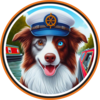
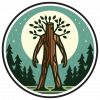

- 196 Resources
- 676 Discussions
- 31 Groups
Associate Wildlife Biologist M.S. Student



- 2 Resources
- 19 Discussions
- 7 Groups

- 0 Resources
- 7 Discussions
- 7 Groups
As an early career conservationist with a keen interest in utilizing GIS for monitoring wildlife species and their habitats, the WiCT program has served as a pivotal platform for my professional development.
15 June 2024
Wildlife Drones was deployed by Zoos Victoria in a trial project tracking captive-bred Eastern Barred Bandicoots that were tagged and released into the wild
14 June 2024
How businesses can use the framework to develop nature strategies and prepare disclosures for regulations such as CSRD.
12 June 2024
Come and do the first research into responsible AI for biodiversity monitoring, developing ways to ensure these AIs are safe, unbiased and accountable.
11 June 2024
The International Climate initiative, opened a call for €20-25M projects. It will fund one project in this call with relevance for landscape restoration.
5 June 2024
WildLabs will soon launch a 'Funding and Finance' group. What would be your wish list for such a group? Would you be interested in co-managing or otherwise helping out?
5 June 2024
Human/wildlife conflict in a county in Kenya, worth the read.
27 May 2024
Do you have photos and videos of your conservation tech work? We want to include them in a conservation technology showcase video
17 May 2024
Article
Read in detail about how to use The Inventory, our new living directory of conservation technology tools, organisations, and R&D projects.
1 May 2024
Article
The Inventory is your one-stop shop for conservation technology tools, organisations, and R&D projects. Start contributing to it now!
1 May 2024
Technology to End the Sixth Mass Extinction. Salary: $132 - $160k; Location: Seattle WA; 7+ years of experience in hardware product development and manufacturing; View post for full job description
1 May 2024
September 2025
October 2025
event
November 2025
event
event
March 2026
September 2024
event
131 Products
Recently updated products
| Description | Activity | Replies | Groups | Updated |
|---|---|---|---|---|
| Hey MGatta, I'm working with adehabitatLt as well, i have a good paper on spatial referencing your data and changing your coordinates to UTM, if you want it (by C.J.... |
|
Geospatial | 8 years 8 months ago | |
| Hello all, I came across this website featuring free vector and raster datasets. Feel free to use it! |
|
Geospatial | 8 years 9 months ago | |
| Now the course is officially over, I wonder how people found it? Too difficult, too easy or just right? |
|
Geospatial | 8 years 10 months ago | |
| I'm not affiliated with Google or this event, but I thought it would be of interest to the community. I have previously attended and it... |
|
Geospatial | 9 years 2 months ago | |
| Things just got a whole lot easier for those of us at universities who train students to use drones as tools for conservation. Many... |
|
Geospatial | 9 years 3 months ago | |
| Another option is OruxMaps, free for android, not very intuitive but very powerful. But it's important to bear in mind that phone GPS accuracy can be lower than... |
|
Geospatial | 9 years 4 months ago | |
| ZSL is holding a remote sensing symposium on the 29th April, 2016: Space - the final frontier for biodiversity monitoring?... |
|
Geospatial | 9 years 4 months ago | |
| Hello all, This blog immediately make me think of our community and the possibilities for one of our members to provide a solution.... |
|
Geospatial | 9 years 5 months ago | |
| Thank you. I am doing pre reading and Information gathering, so I'll know what to expect and be prepared. Thank you for your kind answer Stephanie. |
|
Geospatial | 9 years 5 months ago | |
| Hello all - this paper looks highly relevant to this thread. "Satellite alerts track deforestation in real time: System uses... |
|
Geospatial | 9 years 6 months ago | |
| Advance Object-Based Classification of Delta Region Sindh. A project completed by COGE team. If you have any queries please contact :... |
|
Geospatial | 9 years 6 months ago | |
| Greetings all! I just received this invitation from Google. Feel free to distribute to your colleages. Applications due by March 15.... |
|
Geospatial | 9 years 6 months ago |
Open Geospatial Solutions
1 October 2024 12:09pm
Rapid geospatial package install
26 September 2024 9:15am
GeoDelta Labs
26 September 2024 11:35am
Integrating Satellite Data with on-the-ground conservation tech
9 September 2024 4:59pm
20 September 2024 3:12pm
Hi, Seamus—welcome to WILDLABS!
I work on building ground and sea-truthing technologies for satellite remote sensing related to conservation tech. For example, we have used data collected from Smartfins (thermometers on surfboard fins) to validate Landsat TIRS thermal data and other low-cost tech such as mini- and sensing Secchi disks to evaluate satellite ocean color data. I don't work in conservation tech in the strictest sense (more accurate to say coastal water resources/resilience), but of course it's related, so thought I'd chime in.
Sounds like a great position at Planet, and an important pursuit—good luck, and I hope our paths cross!
24 September 2024 6:02pm
Hi Phil,
Thanks for sharing - this is really interesting work!
Seems like a cool integration of ground-based (or ocean-based) data and satellite data, with a community science aspect as well. I look forward to giving this paper a full read.
Thanks,
Seamus
Design-led innovation for nature
20 September 2024 2:24pm
Remote Sensing Consultancy for Rewilding Europe
18 September 2024 3:59pm
Monitoring on a Shoestring
16 September 2024 8:48am
NASA ARSET Trainings
28 August 2024 8:06pm
9 September 2024 10:18am
ARSET have amazing resources.
13 September 2024 5:17pm
Hi there! Funnily enough, I have been attending ARSET Trainings for years - I think I've participated in about 80% of the ones they have offered over that time - they are awesome, particularly regarding providing ideas for data sources or tools. I find myself always wanting more of a hand's up support with many of them, but they also have some that go through activities in Google Earth Engine, etc. I've been longing for them to setup a QGIS training series with many of the workshops, however I imagine that would be a pretty big lift. I recommend taking as many as you can to gain the insights into resources!
Cheers,
Liz
Landsat Explorer
12 September 2024 7:03am
MAPMIXTURE: An R package and web app for spatial visualisation of admixture and population structure
ANGELA ANDREW MASSAY
7 June 2024 12:43pm
10 September 2024 12:27pm
Thanks Ahmed, I will make sure to install one of them from the internet.👍
10 September 2024 11:39pm
Definitely start with free QGIS since all the others Ahmed mentioned have licensing requirements. QGIS is well supported and can do almost everything other systems can do, and in some cases more. And not to mention all the tutorials and youtube videos to explain from basic to very advanced usage.
11 September 2024 4:07pm
Thank you so much for your advice.🙏
Global model for Livestock detection in airborne imagery - Data, Applications, and Needs
12 August 2024 8:19pm
4 September 2024 6:15pm
It looks like the website has not been updated since 2022 and indeed you need to register. If you go under 'Manage Account' you may be able to register. I tried to register but I got an error saying 'Login failed! Account is not active'. I got an email saying "Your account must be approved before being activated. Once your account has been approved, you will be notified." So I am waiting for the account to be approved...
I'll keep you posted
6 September 2024 12:46pm
Hi Ben!
Great initiative!
A review of deep learning techniques for detecting animals in aerial and satellite images
https://www.sciencedirect.com/science/article/pii/S1569843224000864#b0475
lists a number of data sets (incl. one published by you it seems...)
Also, @dmorris keeps a list of Terrestrial wild animal images (aerial/drone):
https://lila.science/otherdatasets#images-terrestrial-animals-drone
List of other conservation data sets - LILA BC
LILA BC - List of other conservation-related data sets
which seem like it might be useful for you.
9 September 2024 8:10pm
Hi @benweinstein !
- Surely a general detector might be very useful for detecting objects in aerial imagery! Maybe something similar to what MegaDetector does in camera trap images, generally detecting person, animal, and vehicle (and thus also empty photos). This could greatly improve semi-automated procedures. It could also serve as a first step for context-specific detectors or classifiers to be developed on top of this general one.
- There is also the WAID dataset that is readily available. Our research group could also provide images containing cows, sheep, and deer from South America.
Best
DYNAMICSDM: An R package for species geographical distribution and abundance modelling at high spatiotemporal resolution
9 September 2024 9:58am
phytools 2.0: an updated R ecosystem for phylogenetic comparative methods (and other things)
9 September 2024 9:53am
Alaska Satellite Facility
9 September 2024 7:55am
EarthExplorer USGS
9 September 2024 7:42am
A vector map of the world’s terrestrial biotic units: subbiomes, biomes, ecozones and domains
9 September 2024 7:16am
10-Meter annual map of Earth's Land Use/Land Cover from 2017-2023
9 September 2024 7:06am
Geospatial Announcement: Introducing New Geospatial Group Leaders
 Elsa Carla De Grandi
and 2 more
Elsa Carla De Grandi
and 2 more
22 August 2024 6:31pm
23 August 2024 1:09pm
Community Choice Award Winners: 2024 #Tech4Wildlife Photo Challenge
15 August 2024 2:41am
Cast your vote in the #Tech4Wildlife Photo Challenge Community Choice Awards!
12 August 2024 1:46pm
12 August 2024 9:15pm
13 August 2024 11:26am
Society for Conservation GIS Technical Workshop
8 August 2024 6:21pm
Integrating Maps with VR/AR for Exploring Environmental Conservation and sensitization
3 August 2024 7:29am
3 August 2024 3:26pm
Very interesting topic
Modelling functional connectivity?
11 April 2024 11:55am
31 July 2024 6:53pm
so great!!
3 August 2024 8:32am
Wonderfully
AI and Ecology Research Infosession
1 August 2024 3:58pm
23 August 2024 9:44pm
Simple Data Standards for wildlife reserve management scenarios?
23 July 2024 7:16am
24 July 2024 5:48pm
Just as a note, you might also be interested in specific protected area management software like SMART or EarthRanger as well!
25 July 2024 10:11am
Thanks!
I'm definitely looking at Smart and EarthRanger for overall management eventually, but for now I just want to track what we have better - especially as a base map to support further advanced management activities. Funding and available human resources to effectively manage a tech based scientific and best practice focused solution is in short supply - but will hopefully be better addressed within the next year or two.
Move BON Development: Follow up discussion
19 June 2024 12:02pm
11 July 2024 10:14pm
You can catch up on the recording at that same link to the June Variety Hour! Lacey's fabulous talk starts around the 9:40 mark :)
12 July 2024 5:38am
Hi Talia!
I feel like the topic is so broad that it might help to put some constraints around things, see what works, and then broaden those out. I have a lot of ideas regarding the data monitoring and collection side based on the other sensor and observation networks we've set up in the past.
There may also be some potential scope to incorporate things like data collection and integrated monitoring to the Build Your Own Datalogger series where the system is updated to feed data into the observation network.
It'd probably take a bit of discussion and coordination. Let me know if interested. I'm fine to jump on a call or discuss via email too.
22 July 2024 9:24pm
@cmwainaina please take a look
Two-year Postdoc (extendable) in AI and Remote Sensing to Monitor Earthworms in the Field
16 July 2024 9:02am


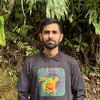


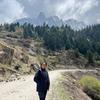

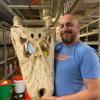






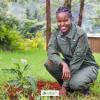








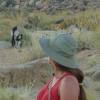



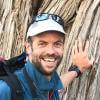
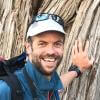

















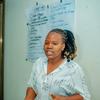


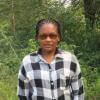




30 September 2024 11:20pm
This is great, thanks for sharing Vance. It looks very comprehensive and includes geemap. Amazing! This will save a lot of time and headaches. Would be great to have some reviews of these packages in the Inventory at some point!